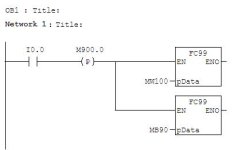PartTimePlcProg
Member
There are some built-in functions which support more than one type for a parameter, e.g. I think SHL supports byte, UInt, etc.
How can I do that for one of my own functions, i.e. give it support for several data types which are more or less compatible, just differing size?
More specifially, is it possible for an InOut parameter?
(and btw, how are InOut params used in SCL? I was just searching through the help of TIA portal 11, and cannot find it... no example)
How can I do that for one of my own functions, i.e. give it support for several data types which are more or less compatible, just differing size?
More specifially, is it possible for an InOut parameter?
(and btw, how are InOut params used in SCL? I was just searching through the help of TIA portal 11, and cannot find it... no example)





